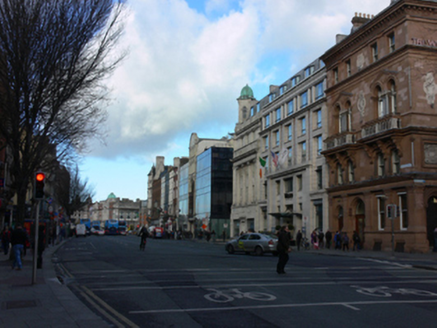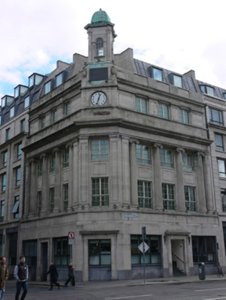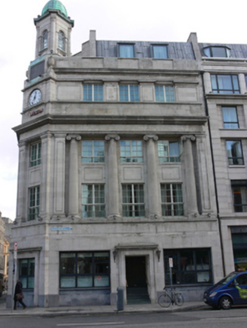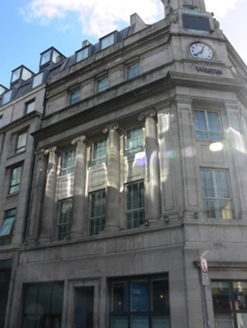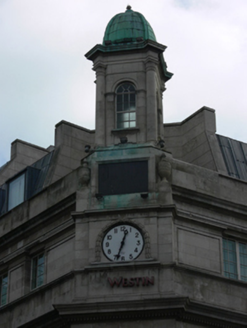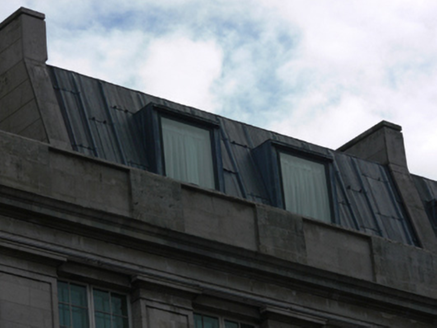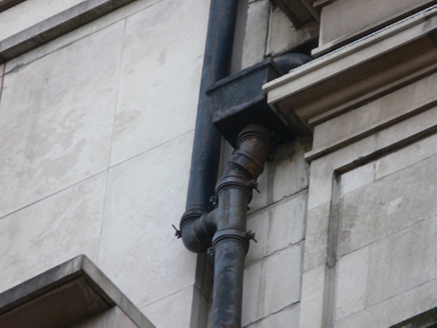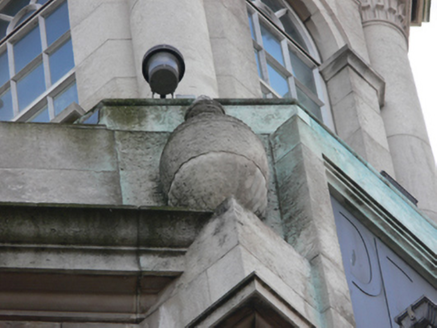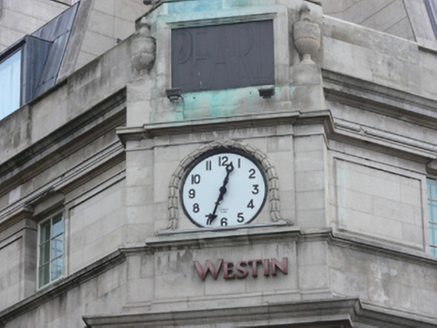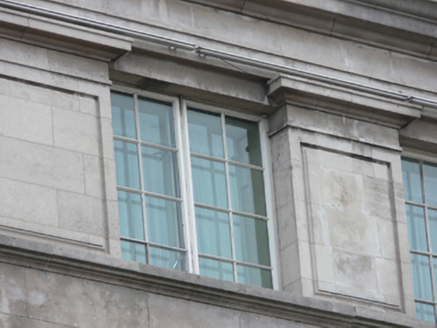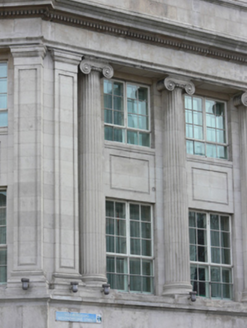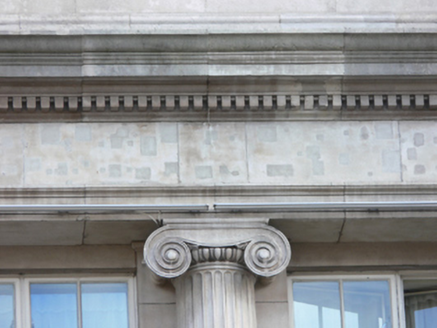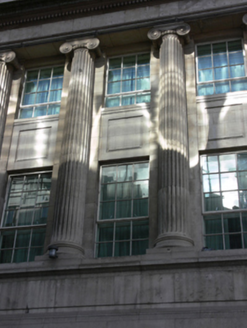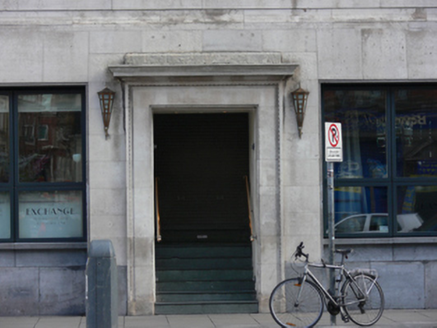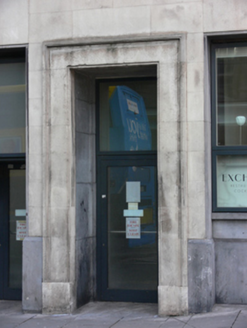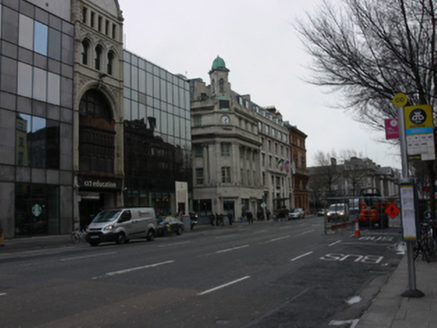Survey Data
Reg No
50020266
Rating
Regional
Categories of Special Interest
Architectural, Artistic, Historical, Social
Previous Name
Pearl Insurance
Original Use
Bank/financial institution
In Use As
Hotel
Date
1930 - 1940
Coordinates
316011, 234224
Date Recorded
24/02/2015
Date Updated
--/--/--
Description
Corner-sited attached four-bay four-storey with attic accommodation former office, built 1935, having cupola with copper roof to angled north-west corner. Now in use as hotel. Profiled sheet metal dormer roof with recent dormer windows, panelled Portland stone parapet, angled Portland stone chimneystacks, cast-iron rainwater goods. Cupola on carved Corinthian columns, rectangular bronze plaque flanked by carved urns and circular clock face with carved swag over. Ashlar Portland stone walls, with rectangular panels, carved string courses, and ashlar limestone plinth course. Carved panelled pilasters and Ionic columns supporting entablature having dentillated cornice to first and second floors. Square-headed window openings with timber-framed casement windows. Carved Portland stone cornice and sill-course to third floor. Square-headed window openings to ground floor, limestone sills and replacement windows. Carved architrave and cornice to ground floor window at angled corner. Square-headed door openings with carved architraves, cornices and replacement doors. Located at junction of Westmoreland and Fleet Streets.
Appraisal
Built for the Pearl Insurance company, this building displays the characteristic restraint of classical buildings designed in the context of the Art Deco movement. The Dublin based architect, A.F. Hendy, composed an elegant façade of Greek columns framed by strict rectangular panels. A bronze name plaque below the cupola, with raised lettering, provides contextual as well as artistic interest. The building represents the optimism felt in Ireland, and in particular Dublin, as the Irish Free State became more established. As part of a wealth of nineteenth and early twentieth-century buildings on Westmoreland Street, this stands out as one of the more decorative and greatly enhances the approach to College Green.
